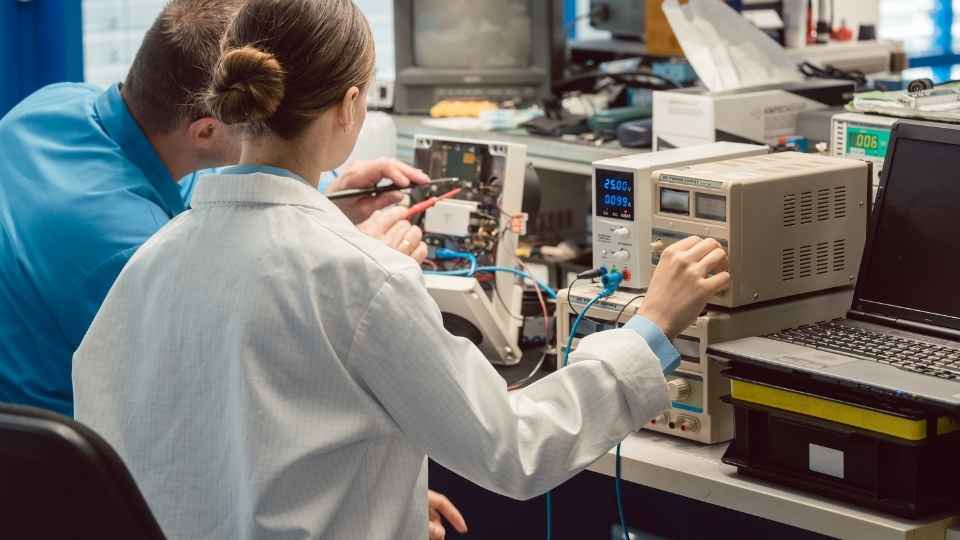
As I dive into the world of capacitors, I am intrigued by their ability to store and release electrical charge. These little devices hold a hidden power within them, like a secret waiting to be uncovered.
In this article, we will explore the inner workings of capacitors, from their different types to how they are used in various industries.
So join me on this journey as we uncover the mysteries behind how capacitors store charge and unleash their potential.
Key Takeaways
- Capacitors store electrical charge by accumulating electrons on one plate and repelling electrons from the other plate.
- Capacitance determines the amount of charge stored and impacts the discharge time.
- Different types of capacitors, such as electrolytic and ceramic capacitors, have different characteristics and are used in various applications.
- Dielectric materials, such as ceramic, aluminum electrolytic, polyester film, and tantalum electrolytic, play a role in determining the performance and properties of capacitors.
The Basics of Capacitors: What Are They and How Do They Work
Capacitors are electronic components that store electrical charge and can be found in various devices. They're made up of two conducting plates separated by an insulating material called a dielectric. When a voltage is applied across the plates, positive charges accumulate on one plate while negative charges gather on the other. This separation of charges creates an electric field between the plates, which allows the capacitor to store energy in the form of potential difference.
The amount of charge stored by a capacitor depends on its capacitance, which is determined by factors such as plate area, distance between plates, and properties of the dielectric material. Capacitors can have different capacitance values ranging from picofarads (pF) to farads (F), allowing them to store varying amounts of charge.
Capacitors play a crucial role in many electronic circuits, including power supply filters, timing circuits, and energy storage devices. Their ability to store electrical charge makes them essential for providing stability and efficiency in electrical systems.
Types of Capacitors: Exploring Electrolytic and Ceramic Capacitors
Electrolytic and ceramic capacitors come in different types and have unique characteristics.
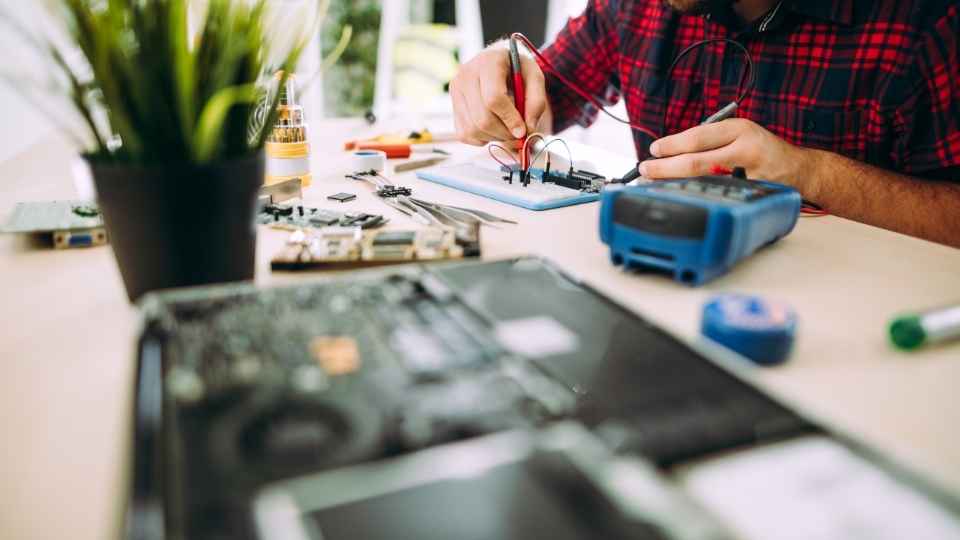
Electrolytic capacitors are made of two conductive plates separated by a liquid or gel electrolyte. They're known for their high capacitance values, making them ideal for applications requiring large amounts of charge storage.
Ceramic capacitors, on the other hand, consist of two conductive plates with a ceramic material as the dielectric. They come in various types such as multilayer ceramic capacitors (MLCCs) and surface mount technology (SMT) capacitors. Ceramic capacitors offer stability over a wide range of temperatures and frequencies, making them suitable for high-performance electronic devices.
Both electrolytic and ceramic capacitors can be found in numerous electronic systems like power supplies, audio equipment, and computer motherboards. Understanding the different types of capacitors allows engineers to choose the most appropriate one based on their specific application requirements.
Overall, these diverse capacitor options provide freedom to engineers to design circuits that meet various performance needs while ensuring reliability and efficiency.
When choosing a capacitor, it's important to consider the type of dielectric material used as it directly impacts the performance of your electronic device. The dielectric material plays a crucial role in determining the capacitance value, voltage rating, and temperature stability of the capacitor. Here are four common types of dielectric materials you should know:
Ceramic: These capacitors use ceramic materials like titanium dioxide or barium titanate. They have high capacitance values, low cost, and wide temperature ranges.
Aluminum electrolytic: These capacitors utilize an aluminum oxide layer as the dielectric material. They offer high capacitance values and are commonly used in power supply applications.
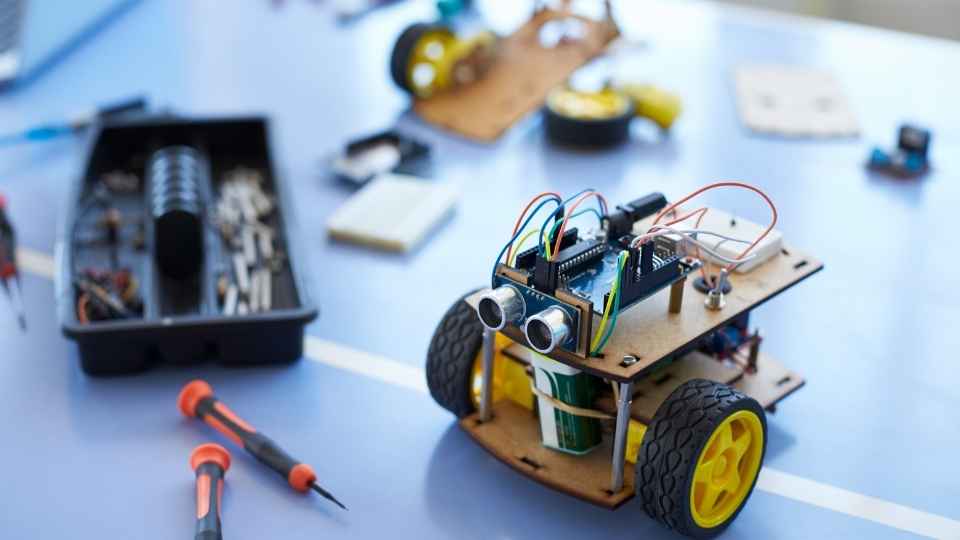
Polyester film: These capacitors use polyester film as the dielectric material and are known for their good stability and reliability.
Tantalum electrolytic: These capacitors employ tantalum pentoxide as the dielectric material and provide excellent volumetric efficiency and low leakage current.
Understanding these different dielectric materials will help you make informed decisions when selecting capacitors for your electronic devices.
Now let's explore capacitance units: the farad and its submultiples...
Capacitance Units: The Farad and Its Submultiples
Understanding the capacitance units, such as the farad and its submultiples, is essential when working with electronic devices. Capacitance measures a capacitor's ability to store electrical charge.
The farad (F) is the base unit of capacitance and represents a large value. However, in practical applications, capacitors are often measured in smaller units like microfarads (μF), nanofarads (nF), or picofarads (pF). These submultiples allow for more manageable values when dealing with everyday electronics.
For example, a typical electrolytic capacitor may have a capacitance value of several microfarads (μF), while ceramic capacitors can range from picofarads (pF) to microfarads (μF). By using these smaller units, we can express capacitances that are more commonly encountered.
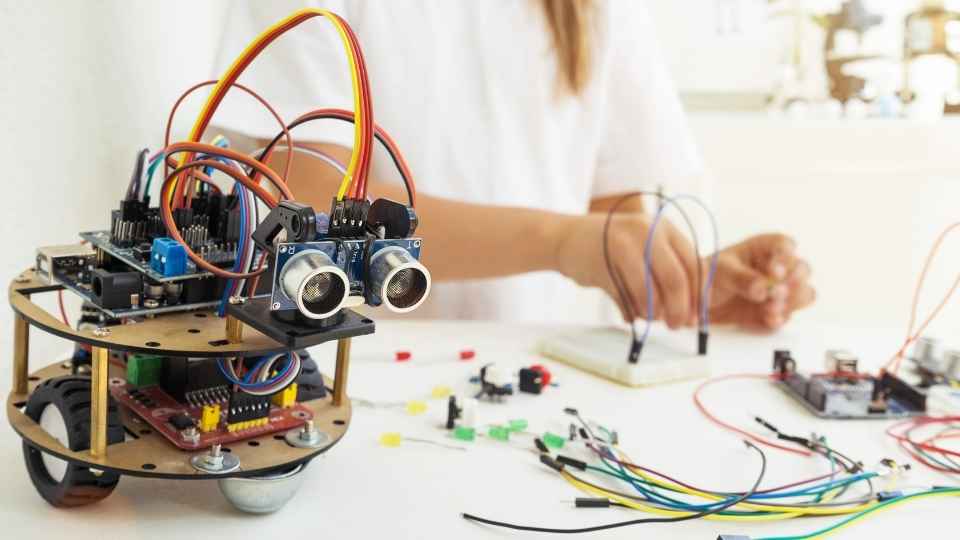
Understanding these capacitance units allows us to choose the appropriate capacitor for our electronic circuits accurately. It also helps us calculate charging times or determine how much energy can be stored within a specific type of capacitor.
Charging and Discharging: How Capacitors Store and Release Electrical Charge
Charging and discharging is the process through which capacitors store and release electrical charge.
When a capacitor is connected to a power source, it charges up by accumulating electrons on one of its plates while removing them from the other plate. This build-up of charge creates an electric field between the plates, allowing the capacitor to store energy.
Conversely, when the power source is disconnected, the stored charge in the capacitor begins to discharge, releasing its stored energy back into the circuit.
Charge Storage Mechanism
To understand how capacitors store charge, you can think of them as two parallel plates separated by a dielectric material. When a voltage is applied across the plates, an electric field is created between them. This electric field causes electrons to accumulate on one plate and leave the other plate positively charged. This separation of charges creates an electric potential difference or voltage across the capacitor.
Here's how a capacitor stores charge:
- The voltage source applies a potential difference across the capacitor.
- Electrons from the negative terminal move towards one plate, creating a negative charge buildup.
- Simultaneously, electrons are repelled from the other plate, leaving it with a positive charge buildup.
- The dielectric material between the plates prevents direct flow of electrons but allows for accumulation of charge.
Discharge Time Factors
When it comes to discharge time, factors such as resistance and capacitance will affect how quickly the stored energy is released. Resistance plays a crucial role in determining the rate at which a capacitor discharges. The higher the resistance, the slower the discharge process will be. This is because resistance limits the flow of current through the circuit, resulting in a longer discharge time.
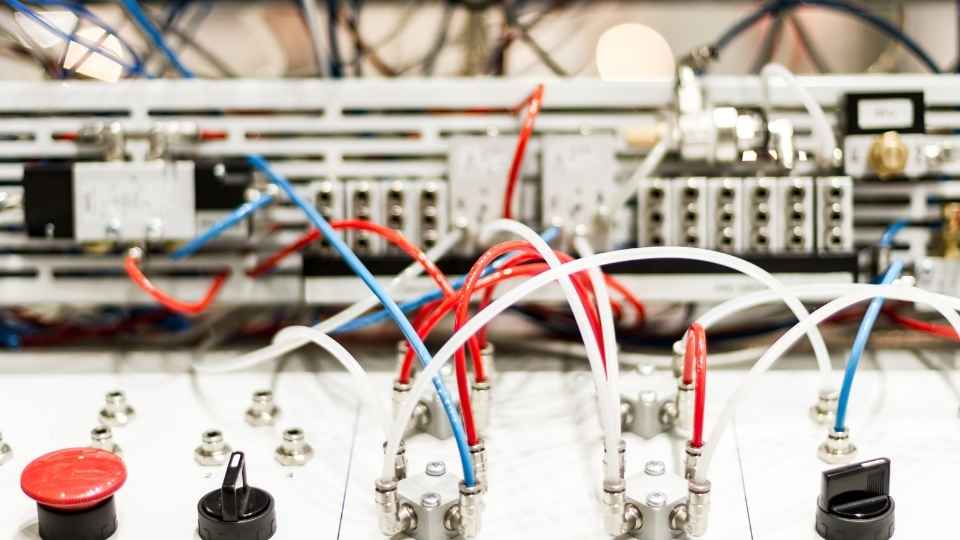
On the other hand, capacitance also impacts discharge time. Capacitance refers to a capacitor's ability to store charge. A higher capacitance means that more charge can be stored and therefore more energy can be discharged over a longer period of time. Conversely, a lower capacitance value will result in faster discharge times as there's less charge available to be released.
Capacitor Energy Release
The rate at which a capacitor discharges is influenced by factors such as resistance and capacitance. When it comes to releasing energy, capacitors have certain characteristics that play a role in determining how quickly they discharge. Here are four key points to understand about the energy release process:
Capacitance: The amount of charge a capacitor can store is directly related to its capacitance. Higher capacitance values result in larger amounts of stored charge, which translates into longer discharge times.
Resistance: The presence of resistance in the circuit affects the rate at which the capacitor discharges. Higher resistance values slow down the discharge process, while lower resistance values allow for faster energy release.
Voltage: The initial voltage across the capacitor also affects the discharge time. A higher voltage leads to a faster discharge, while a lower voltage results in a slower energy release.
Dielectric Material: The type of dielectric material used in the capacitor influences its performance. Different materials have varying levels of conductivity and insulation properties, affecting both charging and discharging times.
Understanding these factors enables us to optimize capacitor usage according to specific requirements and design constraints, providing us with freedom in our applications.
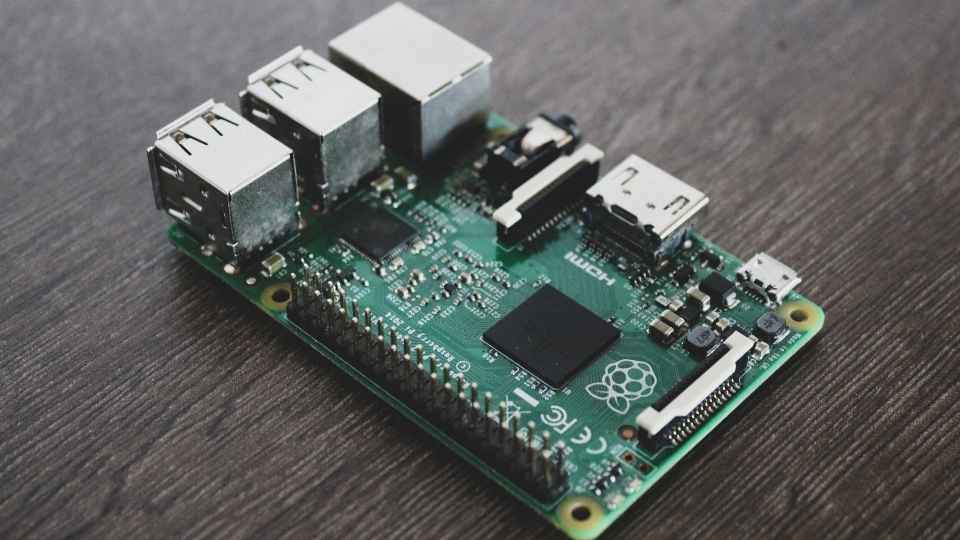
Practical Applications: Where and How Capacitors Are Used in Various Industries
Capacitors are commonly found in electronics, such as computers and smartphones, to store energy and regulate voltage. However, their practical applications extend beyond consumer electronics.
The industrial sector heavily relies on capacitors for various purposes. In power plants, capacitors are used to improve power factor correction by reducing reactive power consumption. This increases efficiency and reduces electricity costs.
Additionally, capacitors find use in motor control circuits to enhance overall performance and stability. They also play a crucial role in telecommunications equipment, providing stable energy storage for uninterrupted transmission of signals.
Furthermore, capacitors are integral components in renewable energy systems like solar panels and wind turbines, where they store excess energy during peak production periods for later use when demand is high.
Capacitors truly revolutionize multiple industries by enabling efficient energy management and ensuring reliable operations while meeting the increasing demands of our freedom-focused society.
Frequently Asked Questions
What Are the Different Types of Capacitors and Their Specific Applications?
There are various types of capacitors used in different applications. The most common ones include ceramic, electrolytic, and film capacitors. Each type has its unique characteristics that make them suitable for specific electronic circuits or devices.
How Do Capacitors Differ From Batteries in Terms of Storing and Releasing Electrical Charge?
Capacitors differ from batteries in how they store and release electrical charge. While batteries use chemical reactions, capacitors store charge by accumulating electrons on conductive plates. When released, the charge flows back into the circuit.
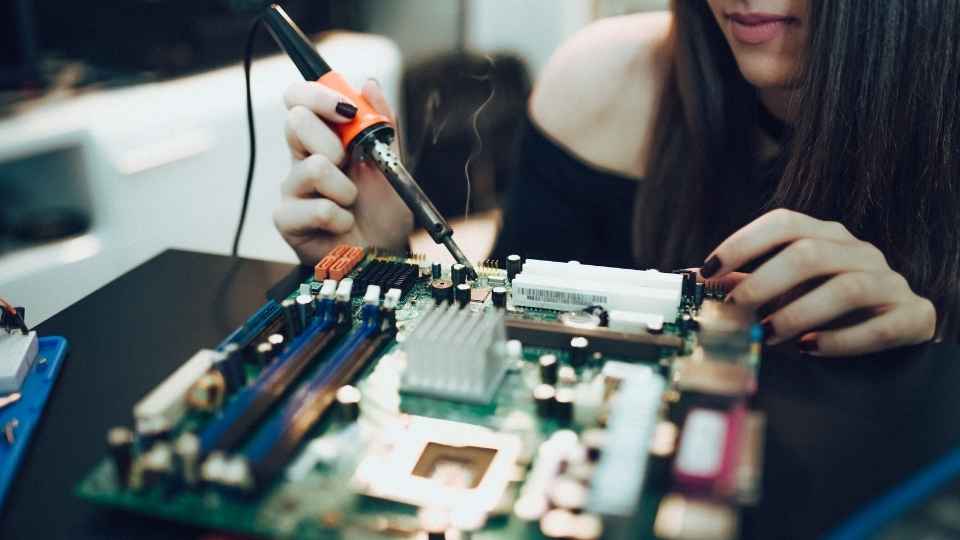
Can Capacitors Be Used in High-Temperature Environments?
Yes, capacitors can be used in high-temperature environments. They are designed to withstand elevated temperatures and maintain their performance. Special materials and construction techniques ensure their reliability and stability under extreme conditions.
Factors such as voltage, temperature, and frequency affect the performance and lifespan of capacitors. High voltages can cause breakdown, excessive heat reduces lifespan, and high frequencies can lead to energy loss.
Are There Any Safety Precautions or Guidelines to Consider When Working With Capacitors?
When working with capacitors, it is crucial to follow safety precautions and guidelines. These measures ensure that accidents are prevented and the risk of electrical shock or damage is minimized.
 Basic Electronics ConceptsEssential ToolsCircuit Design BasicsMicrocontrollersDIY Electronics ProjectsRoboticsPrivacy PolicyTerms And Conditions
Basic Electronics ConceptsEssential ToolsCircuit Design BasicsMicrocontrollersDIY Electronics ProjectsRoboticsPrivacy PolicyTerms And Conditions
